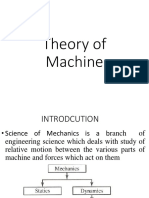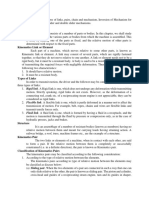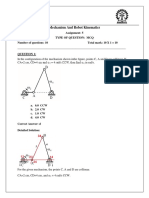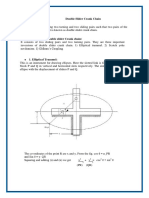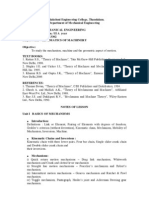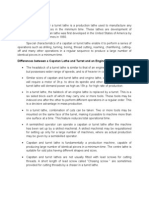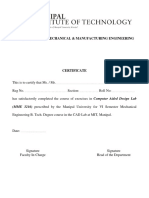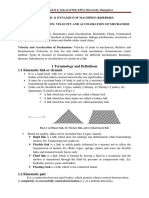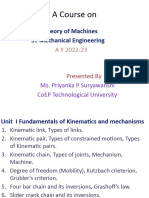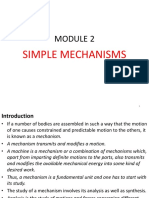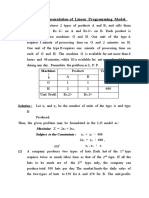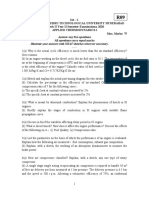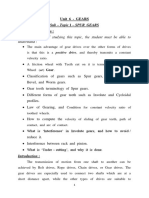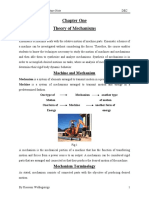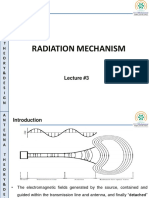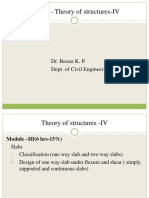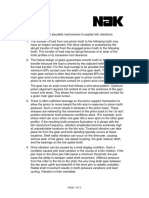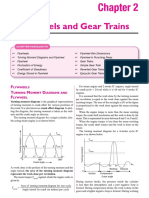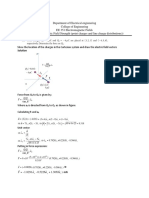0% found this document useful (0 votes)
1K views33 pagesKOM - Unit 1 (Class Notes)
The document discusses the theory of machines and kinematics. It defines key concepts like kinematic links, kinematic pairs, mechanisms, and machines. There are different types of kinematic links and kinematic pairs, which can be classified based on the nature of constraint between links. Lower pairs have surface contact between links, while higher pairs have point or line contact. Common examples of kinematic pairs are screw and nut pairs, gears, cams and followers. The document also discusses kinematic chains, inversions of mechanisms, and the kinematics and dynamics of machines.
Uploaded by
a c s KumarCopyright
© © All Rights Reserved
We take content rights seriously. If you suspect this is your content, claim it here.
Available Formats
Download as DOCX, PDF, TXT or read online on Scribd
0% found this document useful (0 votes)
1K views33 pagesKOM - Unit 1 (Class Notes)
The document discusses the theory of machines and kinematics. It defines key concepts like kinematic links, kinematic pairs, mechanisms, and machines. There are different types of kinematic links and kinematic pairs, which can be classified based on the nature of constraint between links. Lower pairs have surface contact between links, while higher pairs have point or line contact. Common examples of kinematic pairs are screw and nut pairs, gears, cams and followers. The document also discusses kinematic chains, inversions of mechanisms, and the kinematics and dynamics of machines.
Uploaded by
a c s KumarCopyright
© © All Rights Reserved
We take content rights seriously. If you suspect this is your content, claim it here.
Available Formats
Download as DOCX, PDF, TXT or read online on Scribd
/ 33



